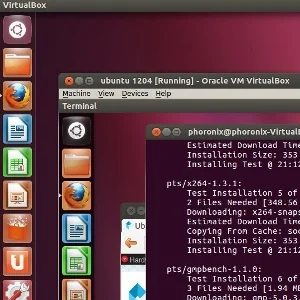QEMU 1.3.0 Picks Up Many New Features

Among the new features to QEMU 1.3 is support for the Linux VFIO driver that was merged into the Linux 3.6 kernel for assigning PCI devices to a virtual machine, the MIPS target now supports Loongson Multimedia Instructions and MIPS32/MIPS64 ASE DSP instructions, TCG emulation supports Intel SMEP and SMAP features of new x86 processors, support for Intel Haswell and AMD Opteron G5 processors, Xtensa single-precision floating point instruction support, USB redirection now supports live migration, improved USB 3.0 support, a new para-virtualized hardware random number generator, and various block device improvements.
The SPICE support in QEMU 1.3 now supports seamless migration, composite QXL commands, multiple monitor support on a single PCI device, arbitrary resolution support, and various other display-related work. Sadly though there's still no guest 3D support for this common Linux virtualization setup. When it comes to KVM, QEMU now supports old-style PCI device assignment as found in the earlier qemu-kvm work. Some of the other QEMU 1.3 features were detailed in a Phoronix article last month.
More information on QEMU 1.3 features can be found from the QEMU Wiki.
5 Comments

